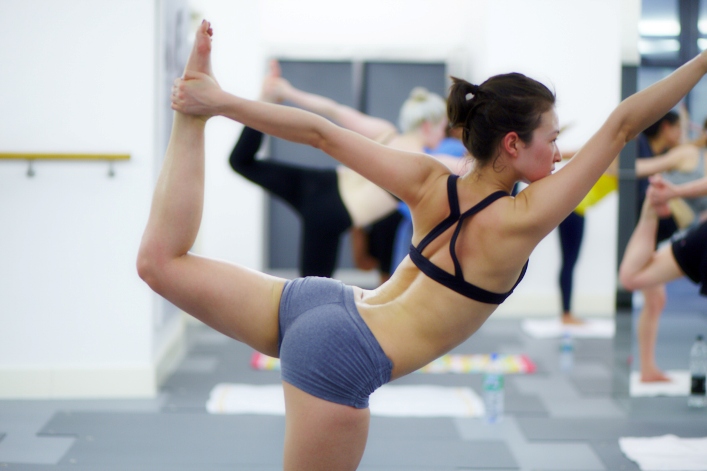Time is always a factor in the months before a wedding, so brides, brooms and grooms-to-be need to make the most of every workout. Nothing maximizes that time quite like Bikram yoga. In addition to enhancing strength and flexibility, the focus on breathing patterns reinforces a calm, can-do attitude. Bikram’s adaptable nature makes it a perfect fit for yoga veterans or newbies, and the all-over toning will help you fit perfectly into your wedding day garments.
“It’s not easy, but it’s very simple,” seven-year teacher Christian Davidson says, quoting Bikram yoga Founder Bikram Choudhury, who developed the practice more than 40 years ago and now oversees the certification of all instructors from his Los Angeles headquarters. Using a precise systematic approach, Bikram yoga puts students through a rapid but difficult series of asanas, or postures, to restore muscles and enhance the lungs and cardiovascular system. An intense, guided routine performed in a heated studio, it allows for deeper stretches and helps ameliorate stiffness. Think of it like a heating pad for your whole body.
At 90 minutes and 105 degrees, it is undoubtedly the most physically demanding yoga practice, and more grueling than most non-yoga cardiovascular activities. The asanas, common to other kinds of hatha yoga, are held for an instructed length of time, usually 10 to 30 seconds, and then released, creating a “tourniquet effect” or “implosion.” This restricts blood supply to the targeted muscle or organ group briefly, and upon release the area receives a burst of fresh blood flow. A therapeutic and detoxifying process, it curtails the pitfalls of traditional exercises like running, where a high-impact motion is performed with little respite and the range of motion is generally repetitive and limited.
Davidson, an instructor at Bikram Yoga Marietta in Georgia, believes it is the unusual combination of rigorous cardio with an emphasis on stress-relieving breath work that sets Bikram, or hot yoga, apart. But why at 105 degrees? He compares the body to a samurai sword that can be shaped and molded when heated, but snaps easily if it is cooled. Heating the environment lets the muscles go deeper into the positions than any other kind of yoga.
The intensity of the workout notwithstanding, Bikram practice still manages to have the invigorating, focusing effect yoga is known for.
“Yoga is the only thing you do where you gain energy,” Davidson says, adding, “Everyone can do it. It’s rehabilitating, healing the body inside and out.”
Like most heart-pumping routines, Bikram is a great way to shape up. But don’t expect the pounds to be falling off after your first week of sessions. Christian cites his fiancée’s experience with Bikram yoga, “She fits into her clothes better, feels better. But on the scale, she’s not losing weight.”
Since muscle is denser than fat, weight loss itself may come second to an improved fitness level, so keep your eyes on the mirror, not the scale. In the long run, however, yoga can be an important part of permanent weight loss, especially thanks to its calming effects.
“You’re forced to meditate because of the postures, so you release stress and cortisol levels drop,” Davidson explains, “Cortisol holds onto weight. This lets it go.” The most important tool to surviving your first experience is patience. Nearly everyone struggles to perform all the postures correctly in their first go-round, so don’t expect to keep up with seasoned yogis. If at some point you cannot continue, lie on your back, breathe deeply through your nose and let yourself recover. Teachers will understand.
“You want to go there, but when people try to force their way there, they make mistakes,” Davidson says. The error he sees most often is people pushing themselves too hard, followed by forgetting to breathe.
Dizziness is the No. 1 complaint among beginners. Nausea is relatively common too—often because novices eat too soon before attending a class. Abstain from eating for at least two and a half hours before going, but be sure to drink plenty of pure water. Also, bring a large bottle (or two) to sustain you throughout an hour and a half of sweating.
MOST VIEWED STORIES
- The Rise of Weddings With Long-Lasting Investments: Benefits Beyond The Big Day
- How to have a green wedding that Mother Earth would attend
- Simplify wedding communication with digital engagement announcements and thank you cards
- A Spiritual and Earthy Elopement at Lassen Volcanic National Park
- Food Trucks, Craft Booze and Cultural Fusions: How New England Weddings Are Changing the Game



























